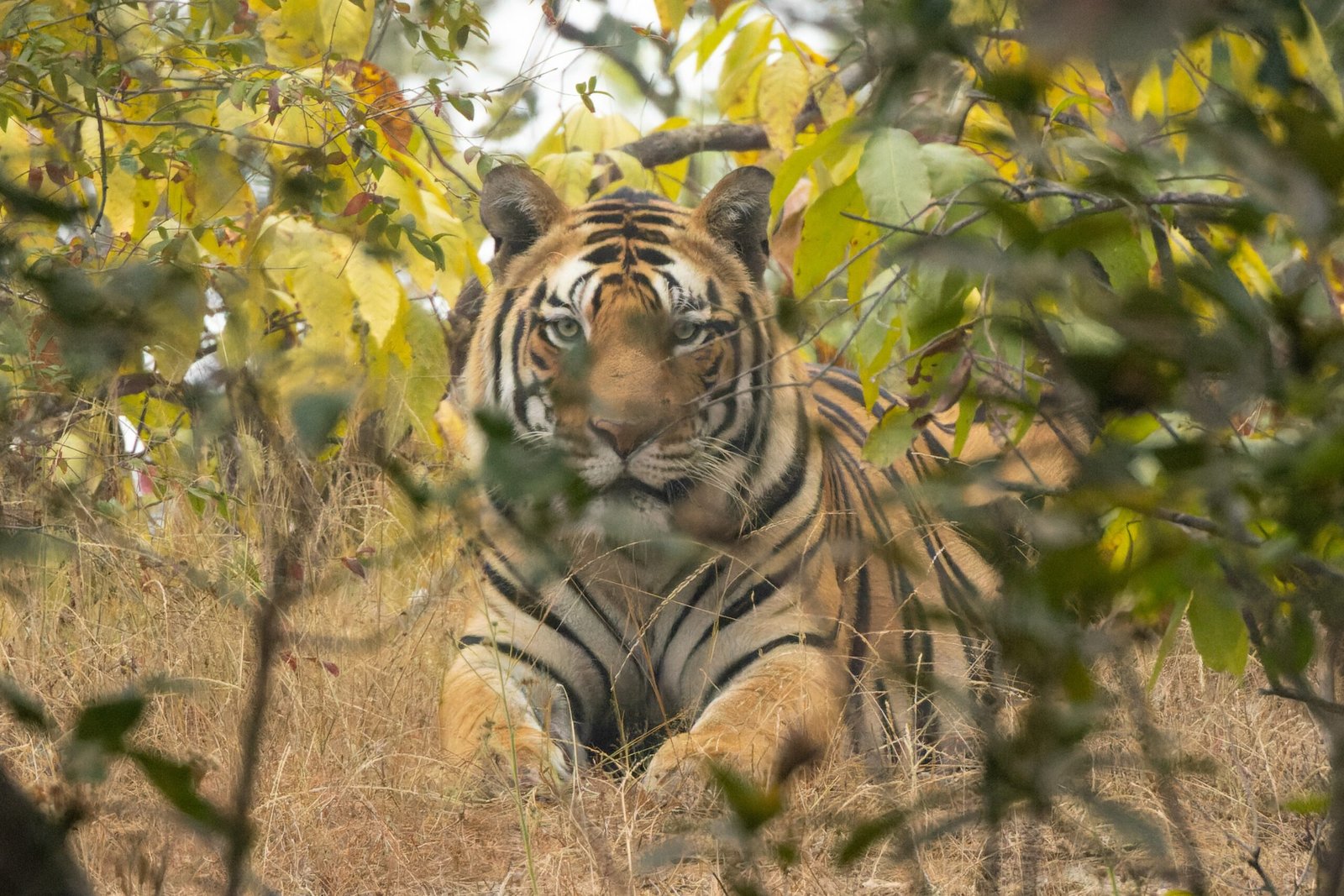Beneath the emerald canopy of the Sundarbans—a breathtaking maze of tidal rivers, muddy creeks, and tangled mangrove roots—a shadow glides silently through the water. This is no ordinary predator. It is the Sundarbans tiger, a creature of myth and science, as much at home in the water as any crocodile, and as silent as the wind rustling through the leaves. These magnificent tigers have adapted to one of the world’s most hostile and mysterious landscapes, becoming legendary swimmers, cunning stalkers, and undisputed masters of the mangrove. The very idea that a tiger—nature’s ultimate land predator—can become a fearless swimmer and thrive among saltwater and swamp is as astonishing as it is true. Journey into the heart of the Sundarbans, where the line between land and water blurs, and discover the awe-inspiring lives of these elusive big cats.
The Enigmatic Realm of the Sundarbans

The Sundarbans stretch across southern Bangladesh and eastern India, forming the world’s largest mangrove forest. This UNESCO World Heritage Site is a labyrinth of rivers, mudflats, and dense forest covering nearly 10,000 square kilometers. Life here is dominated by the ebb and flow of tides, and the intersection of freshwater and saltwater creates a landscape both beautiful and dangerous. The region’s name, which means “beautiful forest,” is fitting, though it hides the peril lurking beneath the surface. For the Sundarbans tiger, this tangled wilderness is both home and hunting ground. Living here requires extraordinary adaptability—a challenge that few animals, let alone tigers, can overcome.
A True Master of Adaptation

While most tigers across Asia inhabit dry forests or grasslands, the Sundarbans tiger has evolved unique traits to survive its watery world. Their compact bodies, slightly shorter than their mainland cousins, allow them to navigate dense undergrowth and swim with surprising agility. Their coats are often darker and denser, helping them blend into the deep shadows beneath the mangrove canopy. These adaptations are not simply physical; Sundarbans tigers exhibit behavioral changes too. They hunt at all hours, often swimming between islands in search of prey, and they must deal with threats and challenges few other tigers ever encounter.
The Art of Swimming: Tigers of the Tides

It’s almost unbelievable, but Sundarbans tigers are exceptional swimmers—perhaps the best among all big cats. Unlike their mainland relatives, they routinely swim across wide, tidal rivers and estuaries, sometimes covering distances of up to 8 kilometers in a single journey. Their powerful muscles and webbed paws propel them effortlessly through water teeming with crocodiles. Swimming is not just a skill but a necessity; it expands their hunting territory and allows them to escape rising tides or potential danger. In the Sundarbans, being a skilled swimmer can mean the difference between life and death.
Mangrove Maze: Navigating a Perilous Landscape
The Sundarbans is an ever-changing maze where land and water shift with the tides. Mangrove roots twist above and below the surface, creating a tangled network that can trap the unwary. Tigers must be nimble and observant, able to leap from root to root or wade silently through knee-deep mud. The ground itself is often unstable, and sudden floods can transform dry ground into a swirling torrent in minutes. Navigating this perilous landscape requires not just physical prowess but also keen intelligence and an intimate knowledge of territory passed down through generations.
The Diet of a Mangrove Hunter
Unlike tigers elsewhere, the Sundarbans tiger’s menu is far from ordinary. While they still hunt deer and wild boar, these tigers are known to prey on fish, crabs, and even monitor lizards when opportunity arises. Their hunting tactics are adapted to the environment—they might ambush prey from behind twisted roots or swim silently up to an unsuspecting animal at the water’s edge. The scarcity of large prey here means Sundarbans tigers must be opportunistic, making the most of every meal. Hunger drives them to take risks, and sometimes, even humans fall victim to these desperate hunters.
Living with Salt: Surviving the Brackish Waters

Life in the Sundarbans isn’t just about evading danger; it’s about overcoming the daily challenge of saltwater. Drinking water is scarce, and salt seeps into every drop. Sundarbans tigers have learned to find and drink from freshwater pools left by the rain or to dig shallow holes in the sand to tap underground springs. Their kidneys are believed to be more efficient at filtering out salt than those of other tigers, a crucial adaptation that helps them survive in an environment where thirst can be as deadly as hunger.
Territory and Solitude: The Tiger’s Domain

Sundarbans tigers are famously solitary, each carving out a territory that may span up to 20 square kilometers. Unlike tigers in dense forests or open grasslands, these territories are defined by water channels rather than land features. Marking boundaries with scent is more complex here, so tigers rely on claw marks on tree trunks and mud, as well as vocalizations that carry across the water. Encounters with other tigers are rare and can be violent, especially when food is scarce. The need for solitude is not just instinct; it’s a survival strategy in a land where resources are spread thin.
Human-Tiger Encounters: A Tense Coexistence
The Sundarbans is home to more than just tigers—over four million people live in villages on its fringes. For generations, local communities have ventured into the forest to fish, collect honey, or cut wood, sometimes with tragic consequences. Sundarbans tigers are notorious for their attacks on humans, a phenomenon that has inspired both fear and awe. These attacks are often a result of dwindling prey or encroachment into tiger territory. To many, the tiger is both a symbol of wildness and a daily threat, woven into local folklore as both a protector and a demon.
The Role of Folklore and Belief

Stories of tiger gods and guardian spirits are deeply embedded in the culture of Sundarbans communities. The goddess Bonbibi is revered as the protector of people entering the forest, and rituals seeking her blessing are common before any journey into tiger territory. These beliefs are more than superstition; they are psychological tools, helping people cope with the constant threat of tiger attacks. Folklore also shapes conservation attitudes, sometimes encouraging protection for the tiger, other times fueling fear and retaliation. The relationship between humans and tigers here is as complex as the mangroves themselves.
Reproduction and Raising Cubs in the Wild
A Sundarbans tigress must overcome enormous odds to raise her cubs. She gives birth in a hidden den—sometimes beneath a thicket of roots or deep within a hollowed tree. Food scarcity, flooding, and rival predators all threaten the survival of her young. Cubs begin swimming almost as soon as they can walk, with their mother guiding them through shallow creeks and teaching them to hunt in the muddy maze. Only the strongest survive, but those that do inherit generations of knowledge about surviving in this unique wilderness.
Threats from Climate Change
The Sundarbans are under siege from forces beyond the tiger’s control. Rising sea levels, driven by climate change, are swallowing large swathes of mangrove forest every year. Saltwater intrusion poisons freshwater pools, while cyclones and storm surges devastate both animal and human communities. For the Sundarbans tiger, the shrinking forest means shrinking territory and fewer prey animals. Scientists warn that without urgent action, these tigers could be pushed even closer to extinction, their watery kingdom lost to the rising tide.
Conservation Efforts: Racing Against Time
Efforts to save the Sundarbans tiger are intense and ongoing. Wildlife reserves have been established, and anti-poaching patrols monitor for illegal hunters. Scientists track tigers with camera traps and GPS collars, gathering crucial data about their numbers and movements. Community-based initiatives aim to reduce human-tiger conflict, offering alternative livelihoods and compensation for livestock losses. Despite these efforts, challenges remain immense, and only a few hundred Sundarbans tigers are believed to survive today. The race to protect them is a battle against both nature and time.
The Importance of the Sundarbans Ecosystem

The Sundarbans are much more than just a tiger habitat—they are a vital buffer against storms, a nursery for fish, and a carbon sink that helps slow climate change. Every creature here, from mudskippers to otters to the elusive tiger, plays a role in maintaining the balance of this fragile ecosystem. Losing the Sundarbans would mean not just the loss of a remarkable forest, but also disaster for millions of people who rely on its resources. Protecting the tiger means protecting the entire web of life in this extraordinary place.
Unique Behaviors and Scientific Surprises

Researchers studying Sundarbans tigers have uncovered behaviors unseen in other tiger populations. Some tigers have been observed stalking prey while partially submerged, using the water as camouflage. Others display unusual tolerance for salty environments, and even change their hunting patterns with the tides. Recent studies also suggest that Sundarbans tigers have smaller home ranges and may be more aggressive due to increased competition for food. These discoveries remind us how much there is still to learn about these mysterious cats.
The Irreplaceable Value of Wild Tigers

The Sundarbans tiger is more than a symbol of wildness—it is a living testament to nature’s adaptability and resilience. Its presence sustains the health of the forest, regulates prey populations, and inspires awe and respect in all who encounter it. The loss of this animal would echo far beyond the mangroves, diminishing our world in ways we cannot fully imagine. As one forest ranger once said, “As long as the tiger survives, there is hope for the forest. And as long as the forest survives, there is hope for us all.”
What the Future Holds for the Sundarbans Tiger
The Sundarbans tiger stands at a crossroads, its future uncertain but not yet decided. Hope glimmers in the dedication of scientists, conservationists, and local communities fighting to save both forest and feline. The challenges are great—rising seas, shrinking habitat, conflict with humans—but the story of the Sundarbans tiger is not yet finished. Its survival may depend on bold action, innovative solutions, and a shared commitment to protecting one of nature’s most remarkable survivors. Will we rise to the challenge, or will this swimming, stalking master of the mangroves slip quietly into legend?




